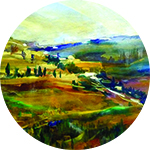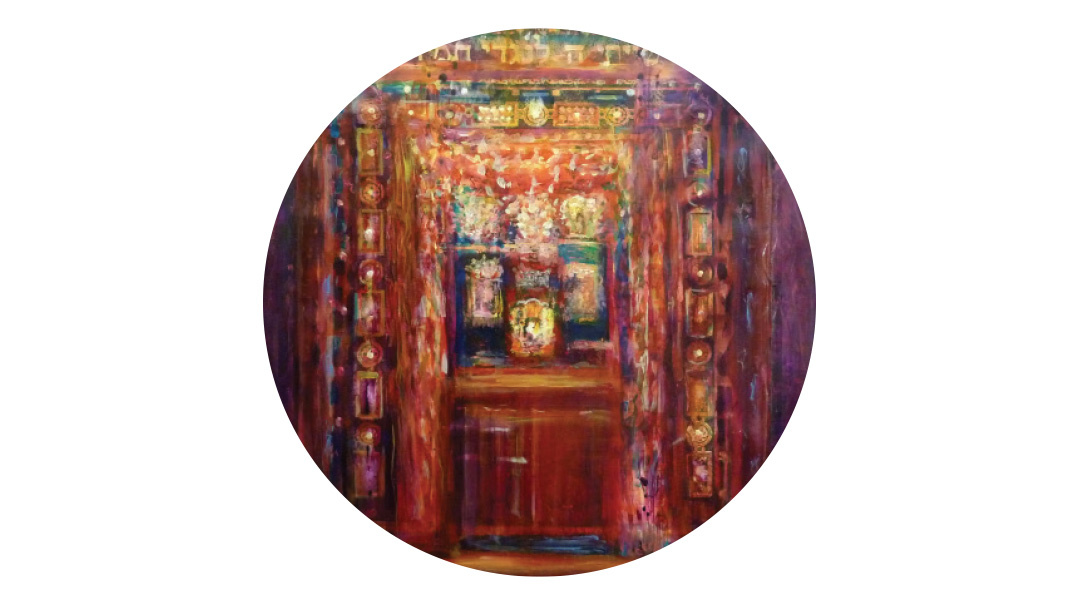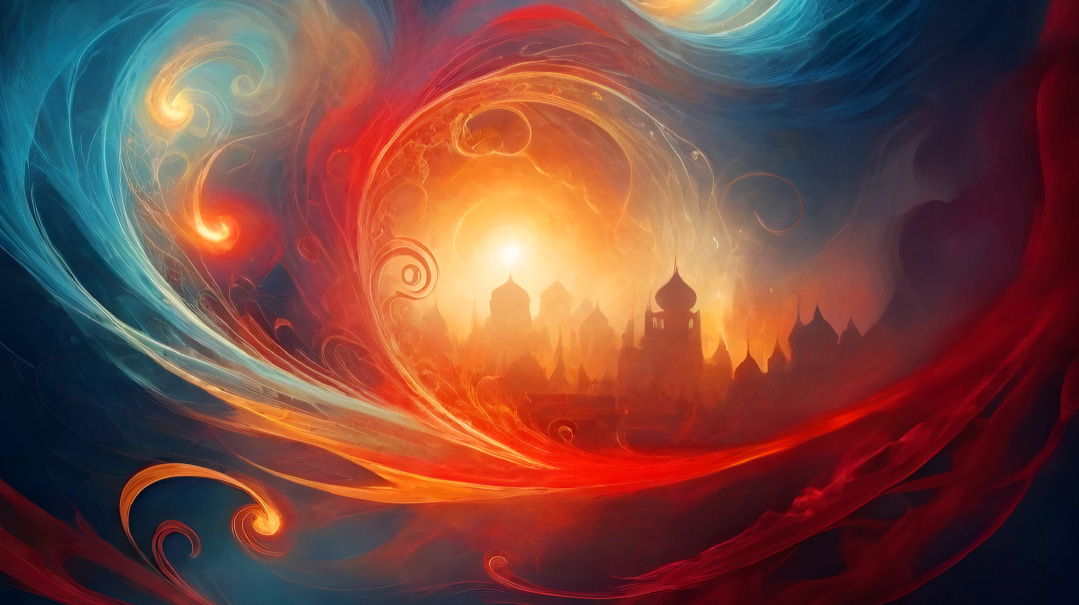An Anatomy of Peace

“Peace, peace, for the far and near, Hashem says, and I will heal you”

A
las, we’re once again entering that period of the summer when the pain of our galus rears its head and cries out. We don’t need to guess what we can do to fix this. People love a “quick fix,” segulos and amulets are favorites in times of pain. Yet, explains Rav Asher Weiss, there is one tried-and-trusted solution that can be found in divrei Toraseinu hakedoshah and divrei Chazal: sinas chinam brought it [the Beis Hamikdash] down, and only ahavas Yisrael can build it once again.
When Yaakov Avinu calls his children to his deathbed, he says, “Heiasfu, v’agidah lachem es asher yikra eschem b’acharis hayamim — Gather together, and I’ll tell you what will happen at the end of days” (Bereishis, 49:1). Rav Shimon Schwab ztz”l reads this pasuk as follows: “I will call to you at the end of days. When will that happen? When you gather as one.”
Each time I hear of yet another dispute, machlokes, or conflict within our Klal Yisrael family, I picture our Mikdash crumbling again and again. This is the pain we’re reminded of at this time of year, and uniting together is the fix that could mend it all.
Hashem tells us in Sefer Yeshayahu (57:19), “Shalom, shalom larachok v’lakarov, amar Hashem u’refasiv — Peace, peace, for the far and near, Hashem says, and I will heal you.”
Please, my friends, let’s work on shalom. We so badly want to be healed.
Characteristics of Shalom
But what is shalom? How do we endeavor to acquire it? Is it even attainable?
Rav Wolbe explains shalom to be “gishur niggudim,” the bridging of opposing forces, the synthesis of diverging opinions. It’s most clearly manifested in “shalom bayis,” in peace between husband and wife. The goal of marriage is perfection of self by learning to love and give to another who is different from you.
Were there no differences, there would be no shalom. Shalom exists where there is difference, and those differences are navigated to a place of peace.
I share with you a poem I wrote when trying to encourage some of my Jewish sisters to meet in harmony:
Peace came knocking, he wanted to get inside,
He was startled when he collided with Envy, Selfishness, and Pride.
Deftly he sidestepped them.
“Excuse me, please,
I’m here to fill your life with sunlight, serenity, and ease.”
“No,” said Pride, “You’re mistaken, you’re not welcome here,
Our job is to show the world that we know about whom to truly care.”
Chimed Envy, “Yes, we’re united in our goal to breed enmity and strife,
That others never achieve or have satisfaction any grander than I do in my life.”
Selfishness snarled and cast a nasty glare, “Leave your caring and concern,
Poor, poor Peace, you have so much that you indeed need to learn.”
With tears in his eyes, Peace sat down on the floor,
He was astonished that he’d barely moved much farther than the door,
When looking up at this trio, he was surprised and alarmed to see,
Pride was blind, Envy lame, and Selfishness had no arms.
“My friends, I can heal you, I know in your hearts you wish to be well.
Your stresses could get better and your fears I could quell.
I bless you with Hashem’s brachah that I carry with me each day.
I’ll open your eyes to see others and try to envision why they say what they say.
You’ll take steps toward the other, you’ll reach out to feel their pain.
You’ll revel in their happiness and keep their joy aflame.
You’ll bask in sister- and brotherhood, arm in arm, side by side,
You’ll marvel at your elation in giving Hashem pride.”
Can you imagine? If Pride could see, and Envy could stride,
Selfishness could feel what others do inside.
We dream for a Mikdash and an end to all we can’t understand.
Peace, please, we welcome you.
Do come join us inside and stand!
Why do we insist on continuing pernicious feuds? We have rifts in Klal Yisrael that were passed from parent to child, and time further warps memory of their cause, and the reasons for them fade into insignificant puff.
I recall a gutsy Shabbos guest once asking my husband, “What’s the worst part of rabbanus?”
Without missing a beat, my husband replied, “Dealing with machlokes.” In fact, my husband has cited a veteran rabbi in our neighborhood as saying that rabbanus is about putting out fires.
I’ve heard Rabbi YY Jacobson quoted as saying, “Children would rather be happy than right, adults would rather be right than happy.”
Let’s humble ourselves enough to strive to recapture the child within us and let him make the choice to maintain peace.
Pursuing Peace
Dovid Hamelech instructs us, “Bakesh shalom v’radfeihu — Seek out peace and chase after it” (Tehillim 34:15).
The Malbim explains that a person may look at humanity and think, “Oh my, people tend to spar and fight, and history proves it. I would do best to seclude myself and live on an isolated mountaintop in peace.” But no, this isn’t peace. Peace is only when there are differences, and those differences are resolved.
Bakesh and radfeihu means we must look for opportunities to make peace. This is the way to give our Borei Olam nachas.
Hillel echoes this message (Avos 1:12) when he says, “Be a student of Aharon. Love peace and pursue it.” I read in a newly reprinted 1500s Italian sefer by Rav Elazar Nachman Puah that Hillel cautions us not to “do” like Aharon, but to be his student. A student not only studies the content of his rebbi’s teachings, but observes his ideology and attempts to be of the same mind in all that he does.
We must be students of Aharon. He was persistent and creative when it came to forging peaceful relations between people. He never tired of bringing shalom to Klal Yisrael. About Aharon HaKohein it was said, “The heart that was happy in the greatness of his brother will wear the Urim V’Tumim.”
As students of Aharon, we must work to see and rejoice in the goodness of our brothers and sisters. The love in Aharon’s heart was a love that overcame any personal feelings of haughtiness and envy. In his heart, he felt his brother was one with him, and that is how he brought so much love to Klal Yisrael. He worked endlessly to share this with others and infuse it into their hearts.
The Tishah B’Av Connection
“Eichah yashvah vadad.” This haunting tune echoes in the song of Jewish History. How is a nation alone? Klal Yisrael is alone for so long because of that night when the greatest schism occurred while they were in the Desert, when the people announced their reluctance to enter the Land. They cried, “We don’t want to go there!” And on that sad night, we were told we would cry for generations.
Countless times in the Desert, Moshe Rabbeinu was astounded by his beloved people. “How can I carry your stresses, your loads, your fights?” he asked.
What a beautiful people we are when we’re b’achdus. Shlomo Hamelech names us the Shulamis, the root of which is shalom. “Mah techezu bashulamis kimcholas hamachanayim — What will you see in the Shulamis, camps dancing in a circle?” (Shir Hashirim 7:1). I once heard it said that a circle of dancers is only a circle when everyone holds on to one another.
Rashi explains that this refers to the different machanos in the Midbar, who although they carried different flags, all encircled the Ohel Moed.
Yes, there will always be different camps, different tribes. But we camp in a circle around our unified heart — the Mishkan Hashem.
(Originally featured in Family First, Issue 850)
Oops! We could not locate your form.







